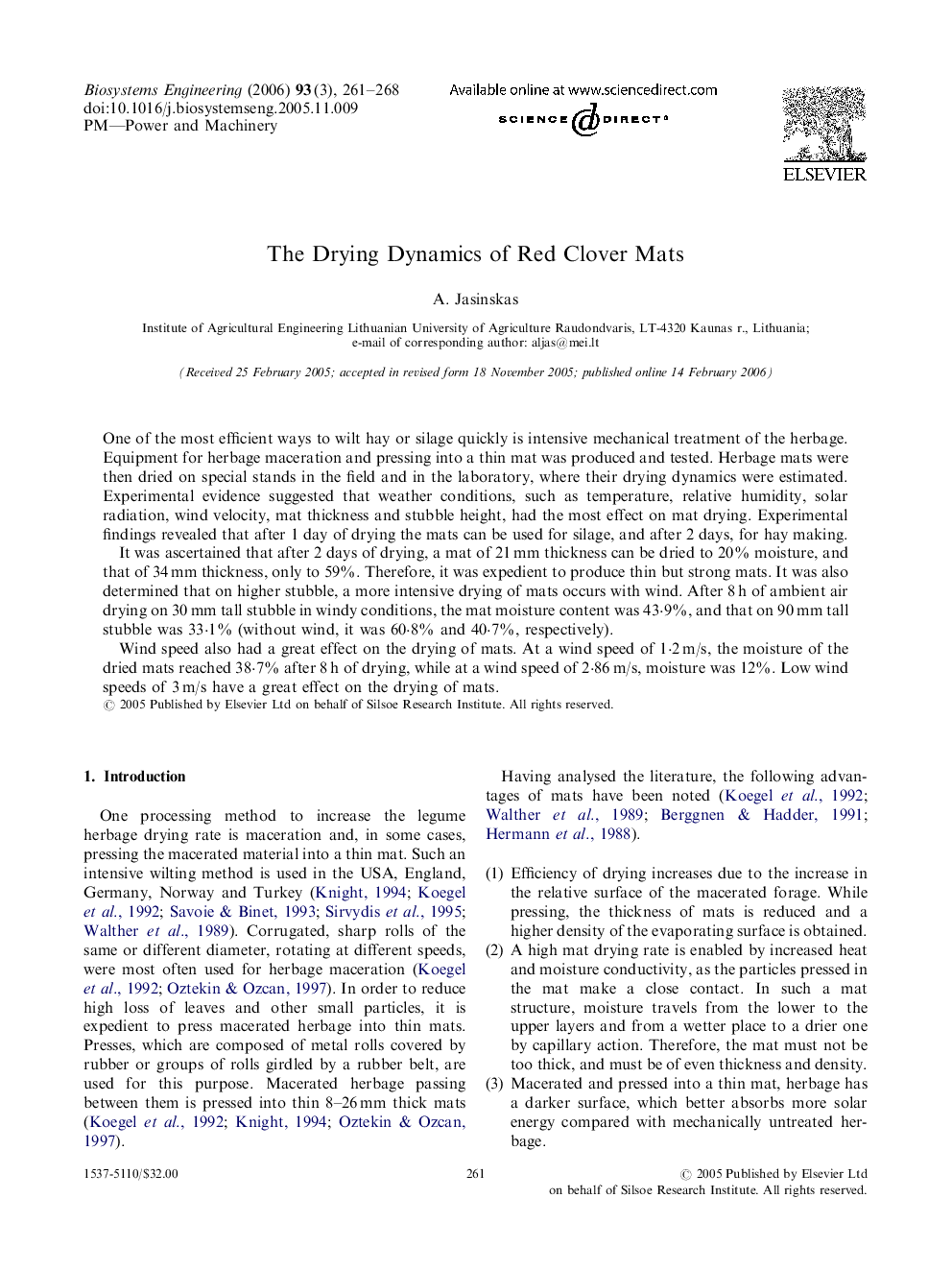| Article ID | Journal | Published Year | Pages | File Type |
|---|---|---|---|---|
| 1712706 | Biosystems Engineering | 2006 | 8 Pages |
One of the most efficient ways to wilt hay or silage quickly is intensive mechanical treatment of the herbage. Equipment for herbage maceration and pressing into a thin mat was produced and tested. Herbage mats were then dried on special stands in the field and in the laboratory, where their drying dynamics were estimated. Experimental evidence suggested that weather conditions, such as temperature, relative humidity, solar radiation, wind velocity, mat thickness and stubble height, had the most effect on mat drying. Experimental findings revealed that after 1 day of drying the mats can be used for silage, and after 2 days, for hay making.It was ascertained that after 2 days of drying, a mat of 21 mm thickness can be dried to 20% moisture, and that of 34 mm thickness, only to 59%. Therefore, it was expedient to produce thin but strong mats. It was also determined that on higher stubble, a more intensive drying of mats occurs with wind. After 8 h of ambient air drying on 30 mm tall stubble in windy conditions, the mat moisture content was 43·9%, and that on 90 mm tall stubble was 33·1% (without wind, it was 60·8% and 40·7%, respectively).Wind speed also had a great effect on the drying of mats. At a wind speed of 1·2 m/s, the moisture of the dried mats reached 38·7% after 8 h of drying, while at a wind speed of 2·86 m/s, moisture was 12%. Low wind speeds of 3 m/s have a great effect on the drying of mats.
